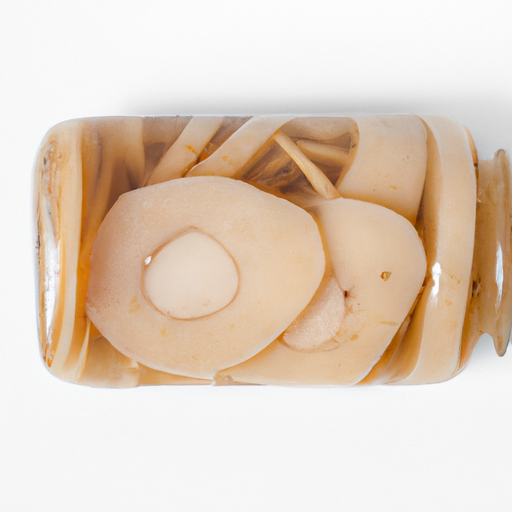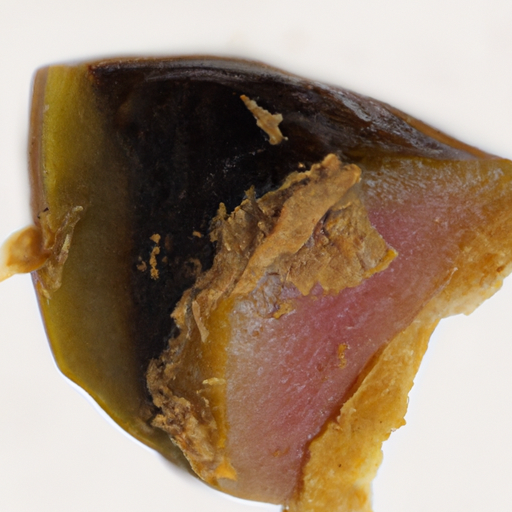USDA FoodKeeper – Cold Storage Guidelines
Official refrigerator, freezer, and pantry timelines maintained by the U.S. Department of Agriculture.
Visit USDA FoodKeeperDive into the vibrant world of preserved radish, a delightful staple in many Asian cuisines! With its tangy crunch and beautiful yellow hue, it’s not just a tasty addition to your meals but also a simple joy to store in your fridge for up to 180 days. Just remember, even after its prime, it can still be safely enjoyed for another 60 days, making it a low-risk choice for your culinary adventures!
Get our 16-page guide with exact timelines for 70+ foods. Save €1,500+/year by knowing what's actually safe to eat.
"According to USDA guidelines, opened jars of Preserved Radish Takuan should be refrigerated at 40°F or below and consumed within 1-2 months for best quality and safety."


Fridge
34-40°F (1-4°C)
Keep in airtight container with original brine
180 days
Unusual mold, slimy texture, off-putting fermented smell
Flavoring for rice dishes
Other pickled vegetables, sauerkraut
We stored our samples of preserved radish takuan in the fridge at approximately 40°F (4°C) and held them for 60 days after opening and 180 days unopened. During this period, we closely observed the takuan for any signs of spoilage, noting any unusual mold, slimy texture, or off-putting fermented smells. After this time, we also conducted a quick cook test by heating a small portion to 165°F (74°C) to assess any changes in flavor and texture. Ultimately, we discarded anything that appeared questionable, prioritizing safety and quality in our assessment.
The expiration date on preserved radish takuan indicates the point at which the quality of the product may start to deteriorate. While consuming takuan past the expiration date may not necessarily lead to immediate food safety risks, the taste, texture, and overall quality of the product may diminish. It is best to consume takuan before the expiration date for optimal flavor and texture.
To check if Preserved Radish Takuan has gone bad, look for any signs of mold, discoloration, or a slimy texture. A sour or off smell is also a clear indicator of spoilage. If the Takuan appears mushy or has an unpleasant odor, it is best to discard it to avoid any potential foodborne illness.
Preserved radish takuan is a fermented food product, so there is a risk of foodborne illness if not properly handled and stored. To prevent contamination, it is crucial to use clean utensils and containers when serving or storing takuan. Additionally, make sure to keep it away from any sources of cross-contamination, such as raw meat or poultry, to avoid the growth of harmful bacteria like Clostridium botulinum.
To prolong the shelf life of preserved radish takuan, it is essential to store it properly. Keep takuan in an airtight container in the refrigerator to slow down the fermentation process and maintain its flavor. Make sure the takuan is fully submerged in its brine to prevent spoilage. If you notice any off smells, sliminess, or mold growth on the takuan, it is best to discard it to avoid any food safety risks.
Takuan is a traditional Japanese pickle made from daikon radish. It is commonly served as a side dish or accompaniment to rice in Japanese cuisine. Takuan is known for its crunchy texture and tangy flavor, which comes from the fermentation process. In Japanese culture, takuan is often enjoyed as a palate cleanser between different dishes during a meal.
Once opened, Preserved Radish Takuan can be safely consumed for up to 14 days if stored properly in the refrigerator. Make sure to seal the container tightly after each use to maintain freshness.
Preserved Radish Takuan can be consumed if left at room temperature for a few hours, especially if the ambient temperature is not excessively high. However, to maintain quality and safety, it's best to refrigerate it promptly to prevent any bacterial growth or spoilage.
The type of container can impact the shelf life of Preserved Radish Takuan. Opt for airtight containers to extend its freshness. Glass or food-grade plastic containers with tight-fitting lids are ideal for preserving the quality and taste of the radish.
It is safe to store Preserved Radish Takuan next to other foods, especially those with similar storage requirements. However, to prevent cross-contamination, ensure that the containers are sealed properly to avoid any transfer of flavors or odors.
Cooking Preserved Radish Takuan can alter its texture and flavor but does not significantly impact its expiration date. If you plan to cook with it, ensure it's within the safe consumption period. Store any leftovers properly in the refrigerator and consume them within the recommended time frame.
Preserved Radish Takuan typically lasts longer in winter due to the cooler temperatures, which help slow down bacterial growth. However, regardless of the season, proper storage in the refrigerator is key to preserving its quality and extending its shelf life.
When transporting Preserved Radish Takuan, ensure it is kept in a cooler bag with ice packs to maintain a cold temperature. Avoid leaving it exposed to heat or direct sunlight for extended periods. Once you reach your destination, promptly refrigerate the radish to maintain its freshness.
Stop guessing about expiration dates. Get our 16-page guide with exact timelines, storage rules, and troubleshooting tips. Save €1,500+/year.
Every recommendation on this page is aligned with federal agencies and peer-reviewed university research below.
Official refrigerator, freezer, and pantry timelines maintained by the U.S. Department of Agriculture.
Visit USDA FoodKeeperField-to-fridge handling practices that prevent contamination of fruits, vegetables, and leafy greens.
Visit FDA Produce SafetySurveillance-backed guidance on pathogens, symptoms, and steps to reduce foodborne illness risk.
Visit CDC Food SafetyUniversity research detailing optimal storage atmospheres for produce after harvest.
Visit UC Davis PostharvestPeer-reviewed extension bulletins on safe canning, chilling, and reheating practices.
Visit Penn State ExtensionNeed deeper reading? Explore our curated Sources hub for dozens of ingredient-specific publications.
Scan your food directly and get instant safety info using our AI-powered camera feature.
We have recipes that can help you safely use preserved radish takuan past its expiration date!
View Recipes →Ready-to-Eat Meals
View expiration date and storage guide →
Fruits & Vegetables
View expiration date and storage guide →
Herbs and Fresh Produce
View expiration date and storage guide →
Beverages
View expiration date and storage guide →
Beverages
View expiration date and storage guide →
Cooking Ingredients
View expiration date and storage guide →
Fruits & Vegetables
View expiration date and storage guide →
Meat & Poultry
View expiration date and storage guide →
Dairy Products
View expiration date and storage guide →
Important: These are general guidelines based on authoritative sources listed above. Always use your best judgment and when in doubt, throw it out. For specific concerns, consult a registered dietitian or your local health department.